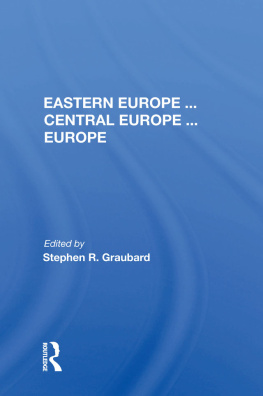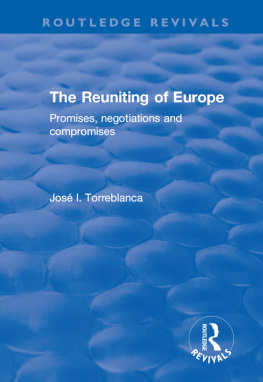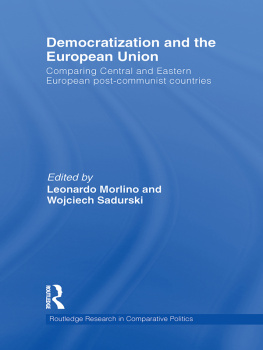DIRECTIONS IN DEVELOPMENT
Human Development
Income Support for the Poorest
A Review of Experience in Eastern Europe and Central Asia
Emil Tesliuc, Lucian Pop, Margaret Grosh, and Ruslan Yemtsov

2014 International Bank for Reconstruction and Development / The World Bank
1818 H Street NW, Washington DC 20433
Telephone: 202-473-1000; Internet:
Some rights reserved
1 2 3 4 17 16 15 14
This work is a product of the staff of The World Bank with external contributions. The findings, interpretations, and conclusions expressed in this work do not necessarily reflect the views of The World Bank, its Board of Executive Directors, or the governments they represent. The World Bank does not guarantee the accuracy of the data included in this work. The boundaries, colors, denominations, and other information shown on any map in this work do not imply any judgment on the part of The World Bank concerning the legal status of any territory or the endorsement or acceptance of such boundaries.
Nothing herein shall constitute or be considered to be a limitation upon or waiver of the privileges and immunities of The World Bank, all of which are specifically reserved.
Rights and Permissions

This work is available under the Creative Commons Attribution 3.0 IGO license (CC BY 3.0 IGO) http://creativecommons.org/licenses/by/3.0/igo. Under the Creative Commons Attribution license, you are free to copy, distribute, transmit, and adapt this work, including for commercial purposes, under the following conditions:
AttributionPlease cite the work as follows: Tesliuc, Emil, Lucian Pop, Margaret Grosh, and Ruslan Yemtsov. 2014. Income Support for the Poorest: A Review of Experience in Eastern Europe and Central Asia. Directions in Development. Washington, DC: World Bank. doi:10.1596/978-1-4648-0237-9. License: Creative Commons Attribution CC BY 3.0 IGO
TranslationsIf you create a translation of this work, please add the following disclaimer along with the attribution: This translation was not created by The World Bank and should not be considered an official World Bank translation. The World Bank shall not be liable for any content or error in this translation.
AdaptationsIf you create an adaptation of this work, please add the following disclaimer along with the attribution: This is an adaptation of an original work by The World Bank. Responsibility for the views and opinions expressed in the adaptation rests solely with the author or authors of the adaptation and are not endorsed by The World Bank.
Third-party contentThe World Bank does not necessarily own each component of the content contained within the work. The World Bank therefore does not warrant that the use of any third-party-owned individual component or part contained in the work will not infringe on the rights of those third parties. The risk of claims resulting from such infringement rests solely with you. If you wish to re-use a component of the work, it is your responsibility to determine whether permission is needed for that re-use and to obtain permission from the copyright owner. Examples of components can include, but are not limited to, tables, figures, or images.
All queries on rights and licenses should be addressed to the Publishing and Knowledge Division, The World Bank, 1818 H Street NW, Washington, DC 20433, USA; fax: 202-522-2625; e-mail: .
ISBN (paper): 978-1-4648-0237-9
ISBN (electronic): 978-1-4648-0238-6
DOI: 10.1596/978-1-4648-0237-9
Cover photo: A three-year-old girl sits on a rocking horse outside a dilapidated house on the verge of collapse in Dzerbene, Latvia. Latvia has one of the fastest growing economies in the European Union, but many people in rural areas still live below the poverty line. Espen Rasmussen / Panos. Used with permission. Further permission required for reuse.
Cover design: Debra Naylor, Naylor Design
Library of Congress Cataloging-in-Publication Data has been requested.
Contents
Preface |
Acknowledgments |
About the Authors |
Abbreviations |
Chapter 1 | Introduction |
Motivation |
Road Map of the Study |
Data Sources |
Notes |
Reference |
Chapter 2 | The Role of Last-Resort Income Support in Eastern Europe and Central Asia |
Context for Last-Resort Programs in Eastern Europe and Central Asia: Poverty, Informality, and Inherited Social Protection Systems |
How Much Is Spent on LRIS Programs? |
Last-Resort Programs in Eastern Europe and Central Asia: What Do They Achieve? |
Changing Role of Last-Resort Programs in Eastern Europe and Central Asia |
Conclusions from the Program Overview |
Notes |
References |
Chapter 3 | Overview of Key Arrangements: Institutional Actors, Regulations, and Program Financing |
Institutional Arrangements |
Setting the Program Rules |
Program Financing |
Lessons from Implementation Arrangements |
Notes |
References |
Chapter 4 | Eligibility |
Eligibility Determination: Key Design Elements |
Eligibility Determination: Key Implementation Elements |
Updates, Recertification, and Exit |
Lessons and Areas for Improvements |
Notes |
References |
Chapter 5 | Benefit Levels and Conditions: Balancing Designs to Manage Disincentives to Work |
Work Disincentives: Theory and Evidence |
The Generosity and Details of the Benefit Formulas |
Making Work Pay |
The Presence of Nonworking Adults in Recipient Households |
Links to Activation Measures for LRIS Participants |
Conclusion |
Notes |
References |
Chapter 6 | Control and Accountability in LRIS Programs |
Management of Information |
Reducing Error, Fraud, and Corruption in LRIS Programs |
Transparency and Redress of Grievances |
Lessons Learned |
Notes |
References |
Chapter 7 | Administrative Costs |
Measuring Administrative Costs |
Administrative Costs of Eastern Europe and Central Asia LRIS Programs |
Structure of the Administrative Costs of LRIS Programs in Eastern Europe and Central Asia |
Next page








